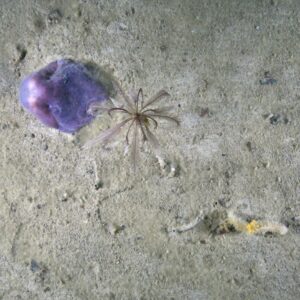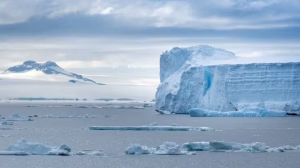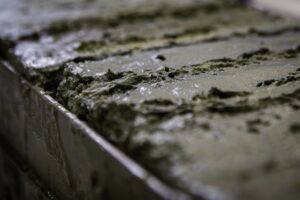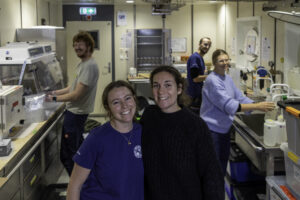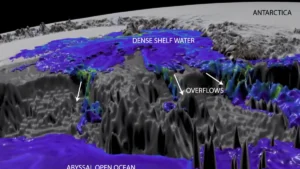SEARCH
Voyage of discovery in modern times By Craig Johnson It’s -22 °C chill factor outside, the water is -1.75 °C, and for the last half-hour the ship has been manoeuvring to avoid ice bergs. I’m cosy in shirt sleeves, sitting in a comfortable chair in the science operations room, and with my two colleagues am […]
Antarctica’s hidden threat: meltwater under the ice sheet amplifies sea-level rise Author: Chen Zhao, University of Tasmania and Ben Galton-Fenzi, Australian Antarctic Division *This article is republished from The Conversation under a Creative Commons license. Read the original article. Louie Lee, Shutterstock One of the biggest challenges in predicting Antarctica’s deeply uncertain future is understanding exactly […]
DMV for kids The Denman Glacier Marine Research Expedition: Exploring Ice, Ocean, and Life in Antarctica By Professor Delphine Lannuzel, ACEAS Science Coordinator Just over the halfway mark of the Denman Marine Voyage, ACEAS presents an update for kids! What have our scientists been up to? Read on to find out. The Denman Glacier in […]
Aceas Logos – ALL Aceas Logos – For Print Aceas Logos – For Digital
Sediment coring: examining an ancient ‘layer cake’ By Dr Taryn Noble Deep-sea sediment cores have been collected during the Denman Marine Voyage, a first for the RSV Nuyina. These sediments contain a rich record of Antarctic climate change going back hundreds to thousands of years in the past. We are very selective about where we […]
Aceas Powerpoint – Scientific Aceas Powerpoint – Organisation Aceas Powerpoint – AARC Poster
All part of the process: biology meets chemistry off an ice shelf By Delphine Lannuzel and Pauline Latour, with the Australian Antarctic Program Partnership (AAPP) During the Denman Marine Voyage, we’re combining biology and biogeochemistry to study phytoplankton either side of the Denman Glacier and the Shackleton Ice Shelf. We’re investigating why the west is […]
Annual Report 2021Annual Report 2022 Download Annual Report
Satellite observing breakthrough for monitoring the movement of Antarctic dense water Ocean modelling researchers have discovered a reliable and long-term new method to capture the formation and export of dense water around the Antarctic coast. Dense water is formed as sea ice freezes, producing vast amounts of salty water that sinks. Being able to monitor […]
Identity Guidelines

